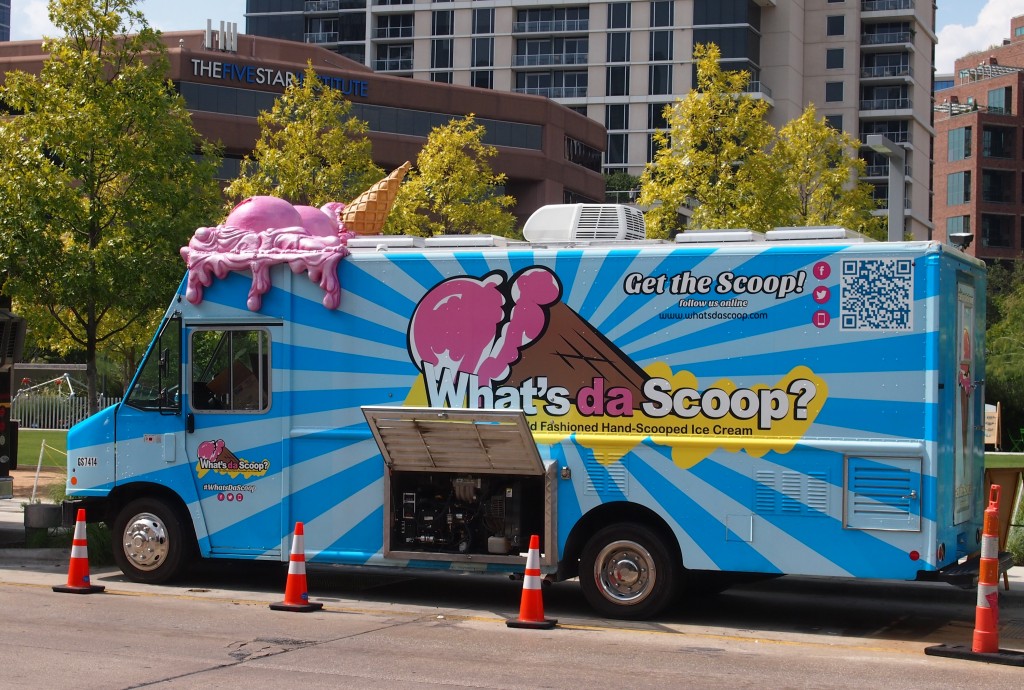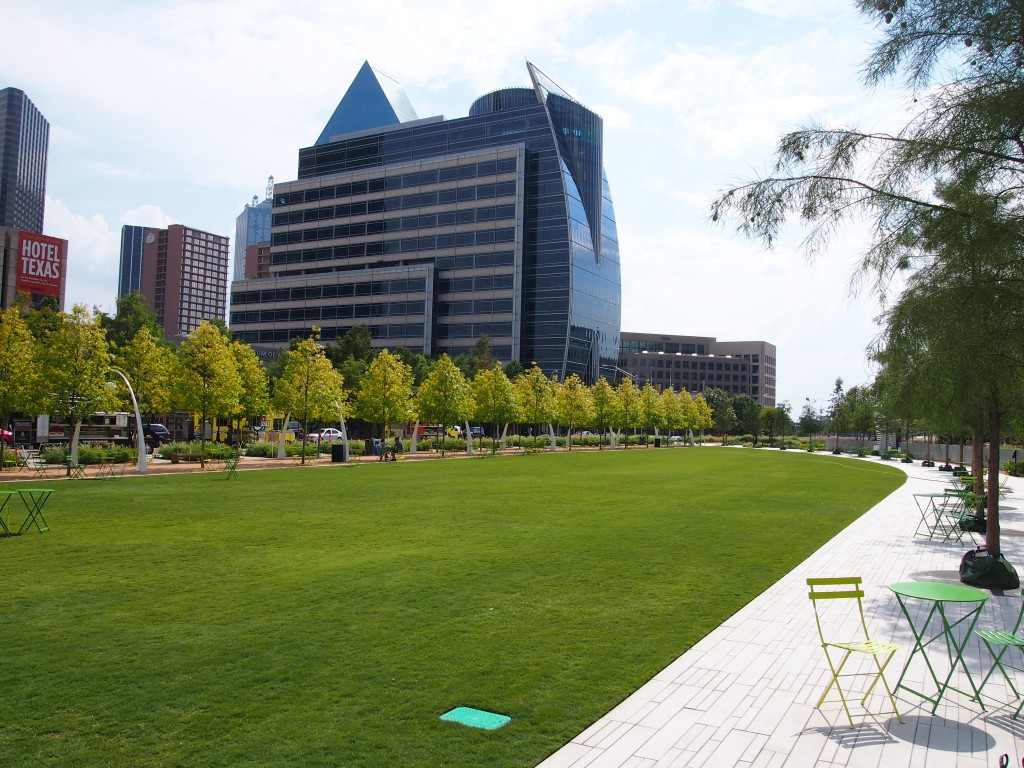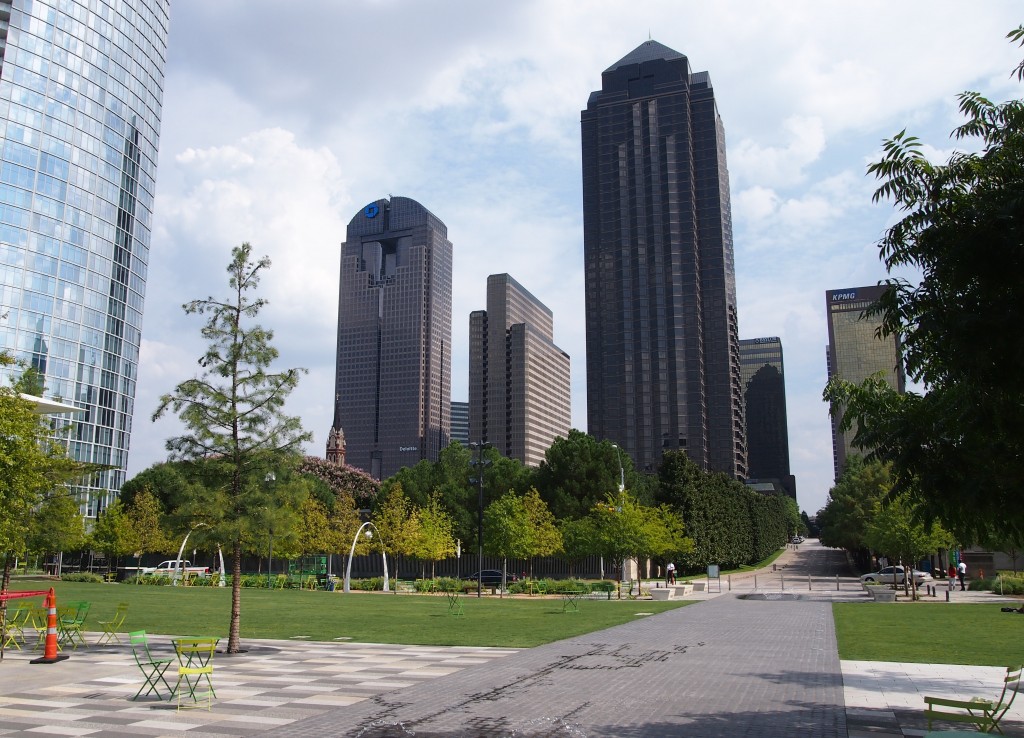Among the things I did today, I mowed the lawn. It’s still green and was getting long. But with any luck that might be the last time until April.
Also, I visited HealthCare.gov to look around. No time for real shopping today, but I wanted to see whether there were any connectivity issues. I didn’t encounter any problems.
Various works of art weren’t the only thing I saw in Dallas. There was also the following. Call it a work of commercial art.
 No ordinary ice cream truck, from the looks of it, but part of the food truck revolution. Or maybe “revolution” is too strong a word. Anyway, there seem to be more food trucks in cities than there used to be, and I suspect their offerings are a cut above what trucks used to serve — and they charge accordingly. What’s da Scoop? doesn’t look like the kind of operation that’s trolling for dollars from kids. It probably wants adult lunchtime business.
No ordinary ice cream truck, from the looks of it, but part of the food truck revolution. Or maybe “revolution” is too strong a word. Anyway, there seem to be more food trucks in cities than there used to be, and I suspect their offerings are a cut above what trucks used to serve — and they charge accordingly. What’s da Scoop? doesn’t look like the kind of operation that’s trolling for dollars from kids. It probably wants adult lunchtime business.
I didn’t find out. I would have considered it — ice cream would have been refreshing on that hot afternoon — but they were closing by the time I wandered by. So were the other food trucks parked in a line next to them. All of them were facing one of Dallas’ spanking new parks, which until recently was air space over a highway. Now it’s Klyde Warren Park, a strip of greenery and other park amenities built over the Woodall Rodgers Freeway, a recessed road that now goes through a three-block-long tunnel underneath the park.
Some years ago, I interviewed Milwaukee Mayor John Norquist, near the end of his term, and he spoke at some length about how highways don’t belong in CBDs. He felt so strongly about this that as mayor, he oversaw the demolition of a short freeway in Milwaukee. I sympathize with the idea. They get in the way of walking around. If you can’t get rid of the thing, building on top of it seems like a good idea.

 The park, which opened only last year, also features an incredibly detailed sign about how it was paid for: a public-private partnership that spent $110 million building it. Private contributions were about $52 million. Other funding sources were from bond sales, various state agencies, and $16.7 million from the American Recovery and Reinvestment Act of 2009.
The park, which opened only last year, also features an incredibly detailed sign about how it was paid for: a public-private partnership that spent $110 million building it. Private contributions were about $52 million. Other funding sources were from bond sales, various state agencies, and $16.7 million from the American Recovery and Reinvestment Act of 2009.
Oh, really? Texas took some ’09 stimulus money? Well, money’s money and I say for their part, the taxpayers of the entire United States – or Treasury bond buyers worldwide, if you want to think of it that way – did a nice turn for the people of Dallas and visitors who happen by, of which I was one.